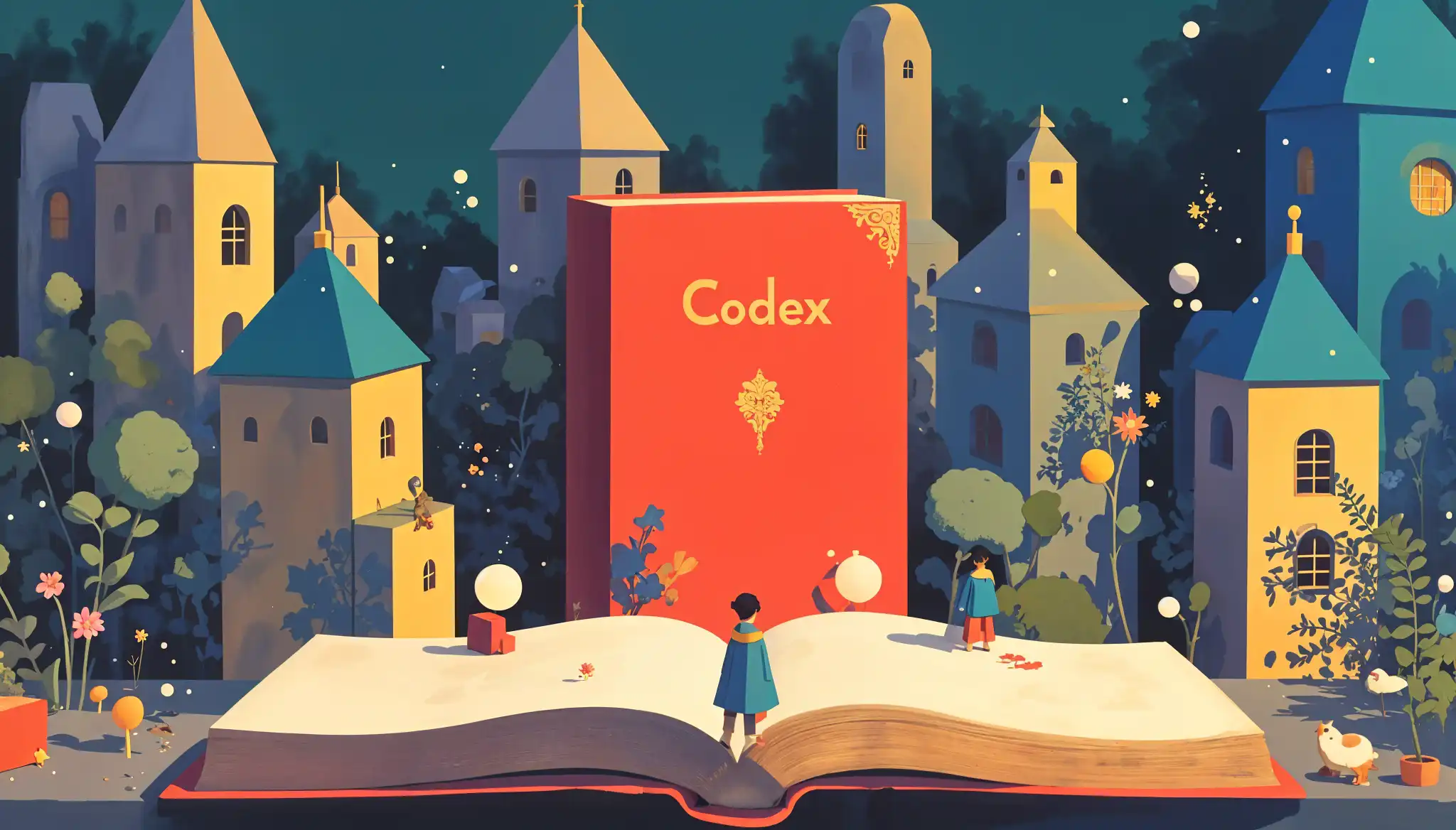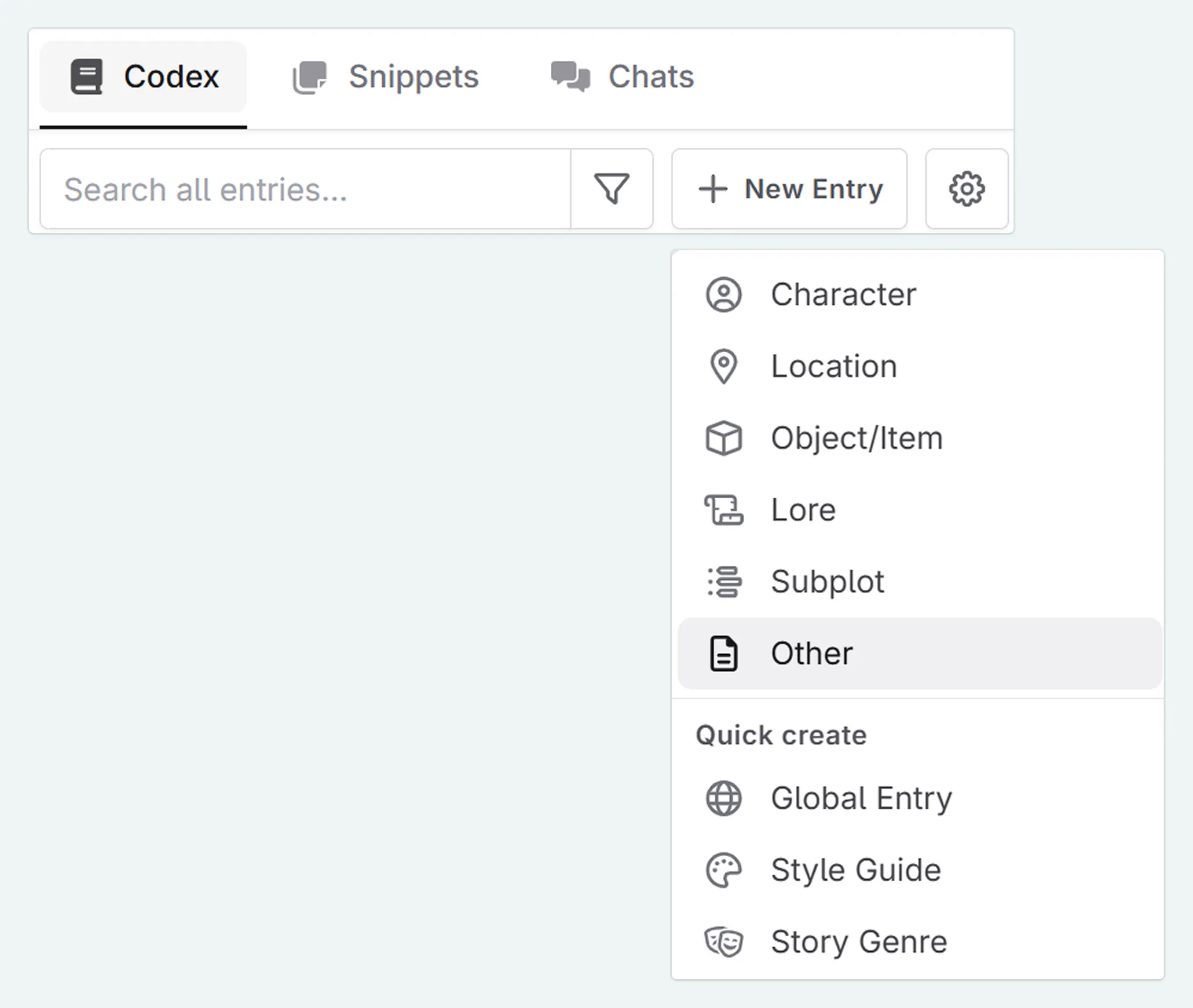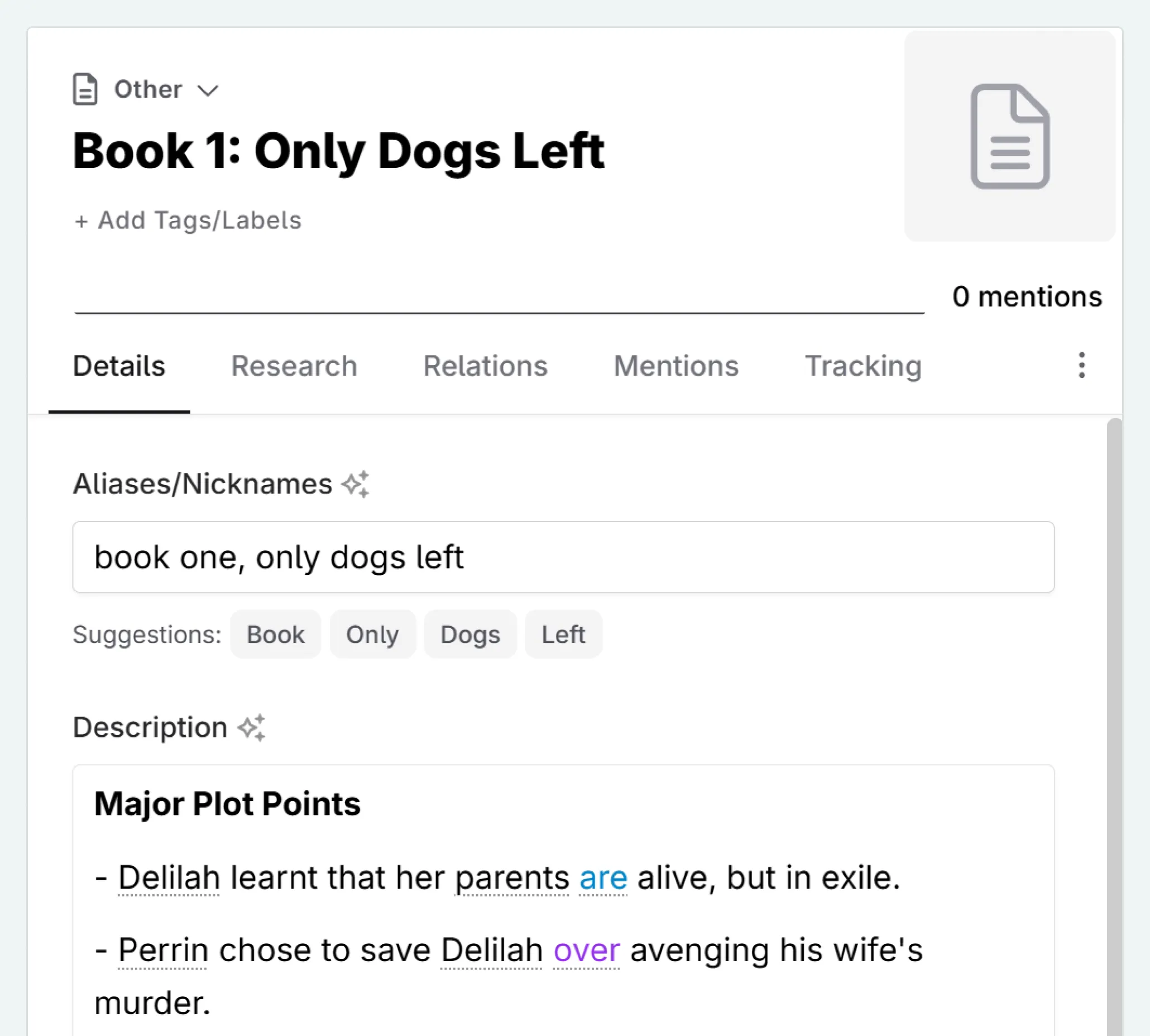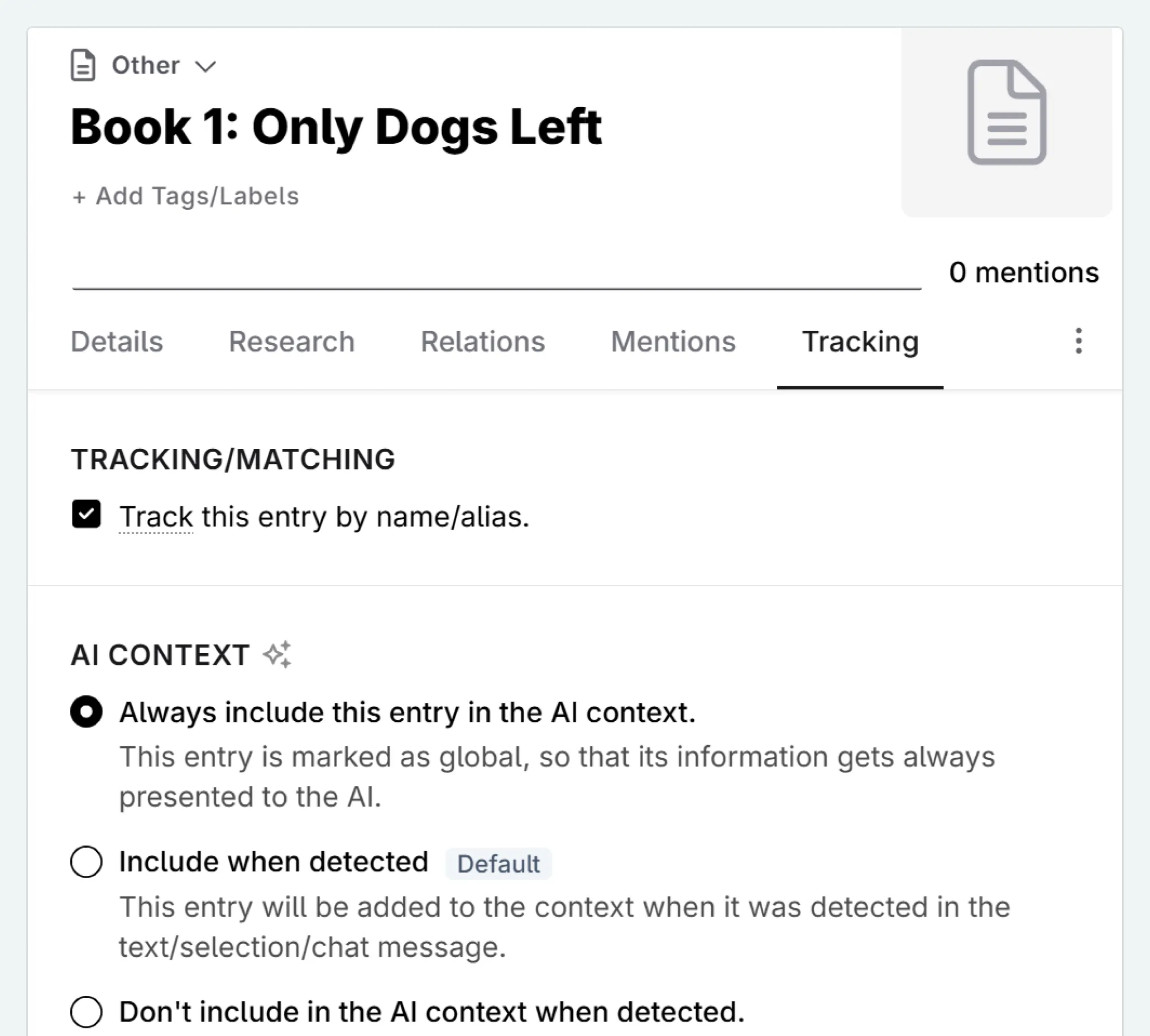
- Level:
- Advanced
- Lessons:
- 10 Lessons
Keeping track of past books in a series
Keep your novel series consistent by storing key information from previous books for easy AI reference.
- Reading Time
- approx. 4 min
We all know the challenge of maintaining consistency across multiple books in a series. Characters evolve, plot threads intertwine, and worldbuilding details accumulate with each installment. Tracking information from your previous books ensures your series maintains internal coherence while allowing your narrative to grow organically.
Creating a dedicated Codex entry for each previous book helps you organize the vital information about past events, character development, and worldbuilding, preventing the dreaded continuity errors.
Why would I want to do this?
Series consistency is crucial for reader trust. Misremembering character traits, forgetting pivotal moments, or contradicting established rules can pull readers out of the story and damage their connection to your series.
A well-maintained Codex across a series ensures that references to previous books are accurate and that your AI assistant has the correct context for continuity. This is especially valuable when there’s been a gap between writing instalments or when your series has complex worldbuilding.
When should I use this?
Consider Codex entries for past books when:
- You’re working on a later installment in a series
- You want to track character development and arcs across multiple books
- You want to avoid continuity errors that might confuse or frustrate readers
How to create a book Codex entry
Create a new Codex entry with the type other for each previous book in your series

Name it clearly (e.g., “Book 1: Only Dogs Left”)
Create codex details for what you want to track. This might include:
- Major plot points
- Key character development
- Worldbuilding revelations
- Unresolved plot threads
- Key relationships
Add aliases that include common ways you might reference this book, if needed.

Set the entry to global, if you want the past books to always be used in your prompting. You may turn this off later in the story, as the information becomes less relevant.

Case study
Let’s say that I have finished my livestream novel Only Dogs Left, and I want to make a Codex entry for when I work on the sequel. I need to keep track of important relationship changes, how the city has changed, and any major discoveries. Here is how I might structure this.
Only Dogs Left
Major Plot Points
- Delilah learnt that her parents are alive, but in exile.
- Perrin chose to save Delilah over avenging his wife’s murder.
- The rebellion successfully destroyed the food supply, but in doing so caused a crack in the Vivarium Sphere. The future of Nova Bezos is uncertain.
Character Development
- Delilah no longer sees justice as absolute, and has to deal with the consequences of her actions.
- Perrin is slowly accepting that there is good left in the world.
Relationship Developments
- Delilah and Perrin are now forced to rely on each other for survival.
- Delilah’s belief in her sister has fallen apart.
Unresolved Threads
- Will Delilah and Perrin survive outside of Nova Bezos?
- Are there really other civilizations out there?
I could choose to use a codex detail for each section, or keep them all in the description, using headings - either will work.
Common Pitfalls
I’m overwhelmed by the information I need to track
Cause: Blank-page syndrome, or a lack of clarity in what are the essential details of your first story.
Solution: Take it slow. Start with the crucial elements: major plot points, information about characters that are important for those first few chapters, essential world-building changes. You can always expand or add more details to the Codex entry as you realize that it is needed.
I’ve discovered a continuity error between my books
Solution: Don’t panic. Small continuity errors can be corrected in the current draft. You can also use the “rewrite” text replacement feature in Novelcrafter to edit your scene with the corrected information.
If the error was in AI generated prose, check the prompt preview see below.
The AI doesn’t know which parts of my Codex entry to use
Cause: Including too much detail can make the entry unwieldy, leading to information being ‘missed’.
Solution:
- Focus on consequential elements that will matter in the book you are working on - if the information won’t be relevant to book 4, then leave it out for now.
- Keep your Codex entries as concise as possible, whilst still conveying the message.
The AI is getting facts wrong
Cause: Not updating the series bible as your understanding of the story evolves. Failing to do this can lead to hallucinations.
Solution:
- Treat your series bible as a living document; add notes when you realize something from a previous book has greater significance than you initially thought.
- Frequently check the prompt preview when writing. Here you can see what information is being used in the prompt, and can diagnose which Codex entries may be causing the issue. It may not be your past-book Codex entry, but another.
The AI is making assumptions about what has happened
Cause: This may indicate that the AI does not have enough contextual information regarding past events.
Solution:
- Use the series Codex for quick reference, but verify important details in the actual manuscripts when necessary.
- Expand on Codex entries where the information is not detailed enough.
- If something is essential to the story, mention it in the relevant beat. This will ensure that the AI understands its importance.
This lesson was taught by:
Kate Robinson
Based in the UK, Kate has been writing since she was young, driven by a burning need to get the vivid tales in her head down on paper… or the computer screen.